Heroines of Film and Television
Heroines of Film and Television
Portrayals in Popular Culture
Edited by
Norma Jones, Maja Bajac-Carter,
and Bob Batchelor
ROWMAN & LITTLEFIELD
Lanham Boulder New York Toronto Plymouth, UK
Published by Rowman & Littlefield
4501 Forbes Boulevard, Suite 200, Lanham, Maryland 20706
www.rowman.com
10 Thornbury Road, Plymouth PL6 7PP, United Kingdom
Copyright 2014 by Rowman & Littlefield
All rights reserved. No part of this book may be reproduced in any form or by any electronic or mechanical means, including information storage and retrieval systems, without written permission from the publisher, except by a reviewer who may quote passages in a review.
British Library Cataloguing in Publication Information Available
Library of Congress Cataloging-in-Publication Data
Heroines of film and television : portrayals in popular culture / edited by Norma Jones, Maja Bajac-Carter, and Bob Batchelor.
pages cm
Includes index.
ISBN 978-1-4422-3149-8 (cloth : alk. paper) ISBN 978-1-4422-3150-4 (electronic)
1. Women in motion pictures. 2. Women on television. 3. Heroines in motion pictures. 4. Heroines on television. I. Jones, Norma, 1972 editor of compilation. II. Bajac-Carter, Maja, 1979 editor of compilation. III. Batchelor, Bob, editor of compilation.
PN1995.9.W6H465 2014
791.43'6522dc23
2013040492
 TM The paper used in this publication meets the minimum requirements of American National Standard for Information Sciences Permanence of Paper for Printed Library Materials, ANSI/NISO Z39.48-1992.
TM The paper used in this publication meets the minimum requirements of American National Standard for Information Sciences Permanence of Paper for Printed Library Materials, ANSI/NISO Z39.48-1992.
Printed in the United States of America
Part III
Diversity Concerns
Chapter 10
Her Story, Too
Catherine Bailey Kyle
Final Fantasy X, Revolutionary Girl Utena, and the Feminist Heros Journey
You say its your story, but its my story, too. Yuna, Final Fantasy X
Trigger warning: Some of the content here deals with rape and other forms of violence against women.
No Girls Allowed: Why Gender Equality in Geek Culture Matters
In May 2012, Canadian American feminist media critic Anita Sarkeesian initiated a Kickstarter campaign intended to fund a series of short films analyzing the often-problematic treatment of female characters in video games.
However, this feat was not achieved without significant backlash. In a TEDxWomen talk, Sarkeesian describes the cyber mob that resorted to all manner of vitriolic tactics to shame and silence her, including hacking her social media accounts, vandalizing her Wikipedia page, e-mailing her images of her likeness being sexually assaulted, and even creating a digital game where players could beat the bitch up, depicting an image of the critics face that became increasingly bloodied with each click of the mouse.
The problem of misogyny in geek cultureloosely defined here as the social enjoyment of science fiction, fantasy, and/or action-adventure narratives as they appear in literature, film, television, video games, and other mediais widespread and rampant. The online world is rife with sexism, but so too are conventions and other gatherings. One example that garnered media attention was cosplayer Mandy Carusos experience at New York Comic-Con in 2012 when an interviewer asked her to spank [him] and reveal her cup size. one that seeks to resist alterations to the status quo by creating a toxic environment for females who would dare to participate. Patriarchal attitudes still hold sway over many areas of life, but what, specifically, is at the root of this intense hostility among geeks, a group that has long faced second-class treatment itself?
Patriarchy is a many-headed hydra, so it may be impossible to pin down a single right answer. However, one element that undoubtedly contributes to the boys club mentality Sarkeesian speaks of is the repeated reliance of sci-fi, fantasy, and action-adventure plots on narrative formulas that glorify men and objectify, marginalize, and disempower women. In the first installment of her Tropes vs. Women in Video Games series, Sarkeesian points out that the damsel in distress clich frequently seen in games has been continually implemented in storytelling since ancient Greece, citing the myth of Perseus and Andromeda as one well-known example. And Sarkeesian is clear on the point that these treatments differ from the struggles Campbells archetypal hero must face on (usually) his quest:
[T]he typically male character may occasionally also be harmed, incapacitated or briefly imprisoned at some point during their journey. In these situations, the character relies on their intelligence, cunning, and skill to engineer their own escape.... That process of overcoming the ordeal is an important step in the protagonists transformation into a hero figure.
A Damseled woman on the other hand is shown to be incapable of escaping the predicament on her own and then must wait for a savior to come and do it for her.... Consequently, the trope robs women in peril of the opportunity to be the architects of their own escape and therefore prevents them from becoming archetypal heroes themselves.
Indeed, when feminist mythologist Maureen Murdock asked Joseph Campbell about the idea of a female heros journey, he responded that all [a woman] has to do is realize that shes the place that people are trying to get to. When a woman realizes what her wonderful character is, shes not going to get messed up with the notion of being pseudo-male. While The Hero with a Thousand Faces does delve into a few myths centering on female protagonists, such as that of Psyche and Cupid, the vast majority of them star male leads. Moreover, as Sarkeesian suggests, the male heros emergence into adulthood and hero status not only repeatedly includes, but hinges on the rescue of a helpless maiden, bolstering the message again and again that boys save while girls need saving. In short, scores of female characters are habitually denied the complexity of their male saviors, rendered objectified stepping stones on the heros quest for power and respect.
Of course there are alternative forms of storytelling that more commonly exhibit thoughtfully fleshed-out and psychologically complex female characters. The literary fiction of Jane Austen, George Eliot (also known as Mary Ann Evans), Virginia Woolf, and Toni Morrison, to name only a few, all feature complicated and well-crafted female leads. However, none of these stories fulfill the needs of a reader seeking the epic stakes and otherworldly feel of a high fantasy quest or sci-fi adventure. There is something uniquely alluring about the tales that emerge out of the heros journey traditionpsychologist Dan P. McAdams even states that epics are one of the four major narrative arcs that can shape peoples understanding of what is possible in their own lives and female fans should not be made to feel alienated from this vital genre as a whole on account of outdated tropes.
Progress is slowly being made on this front: In Buffy the Vampire Slayer, Xena: Warrior Princess, and other texts, we find strong, confident, and capable female heroes. Feminist critic Jennifer K. Stuller draws important connections between our abiding need for myth and the narratives found in popular culture in Ink-Stained Amazons and Cinematic Warriors: Superwomen in Modern Mythology. Fantasy author Valerie Estelle Frankels Buffy and the Heroines Journey: Vampire Slayer and Feminine Chosen One explores this parallel as well. As is evidenced by the outpouring of support for Tropes vs. Women in Video Games, the plethora of sites, forums, online communities, and nonprofits committed to improving the representation of women in the media, and the ever-increasing volume of female fans voices in geek culture, the tide is gradually turning. Still, an examination of the narrative formula that so reflexively and routinely marginalizes female charactersthat is, the traditional, archetypal heros journeycan be a useful tool in the march toward gender equality.
Next page
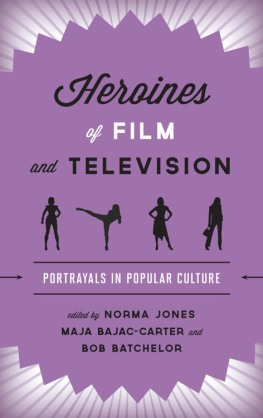

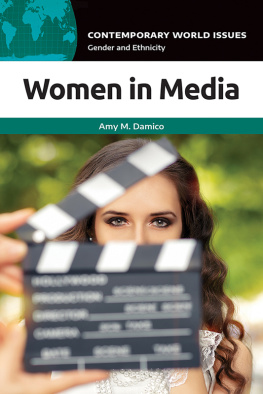
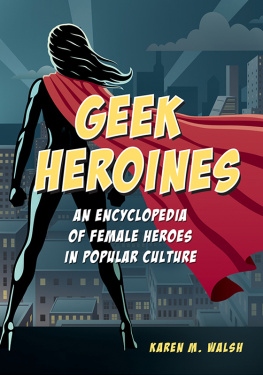
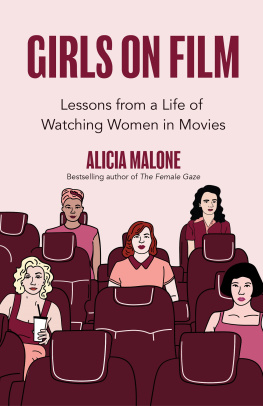

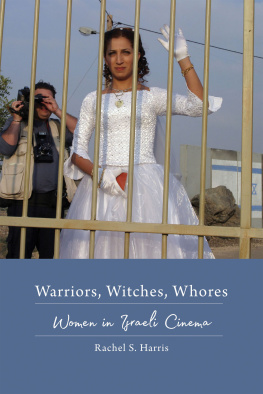

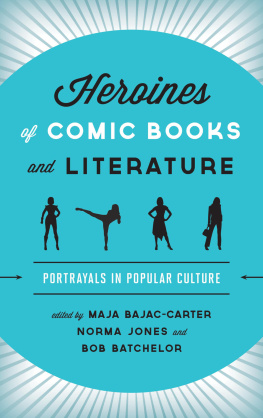
 TM The paper used in this publication meets the minimum requirements of American National Standard for Information Sciences Permanence of Paper for Printed Library Materials, ANSI/NISO Z39.48-1992.
TM The paper used in this publication meets the minimum requirements of American National Standard for Information Sciences Permanence of Paper for Printed Library Materials, ANSI/NISO Z39.48-1992.